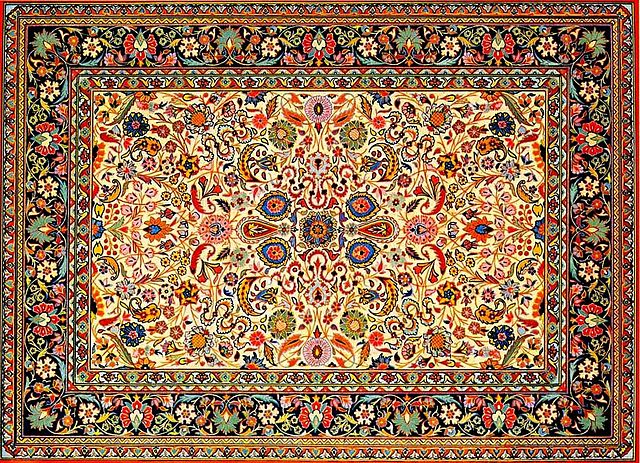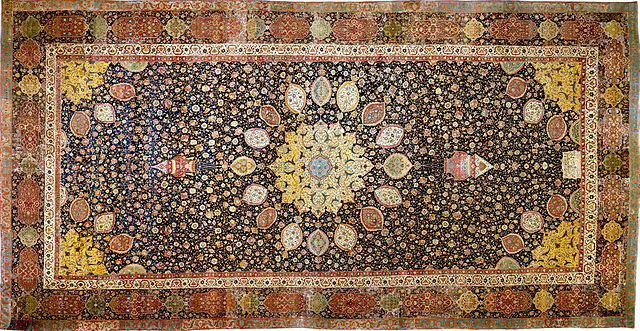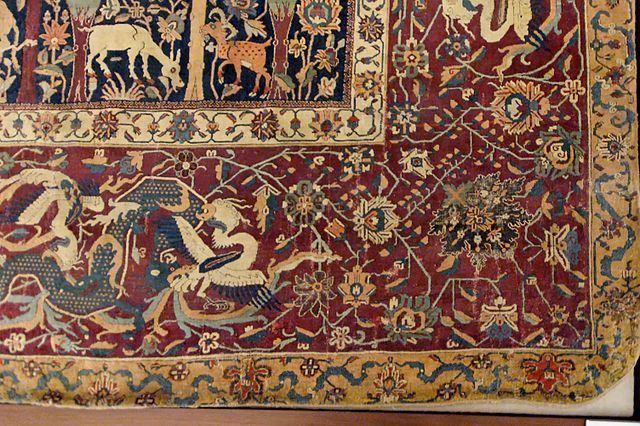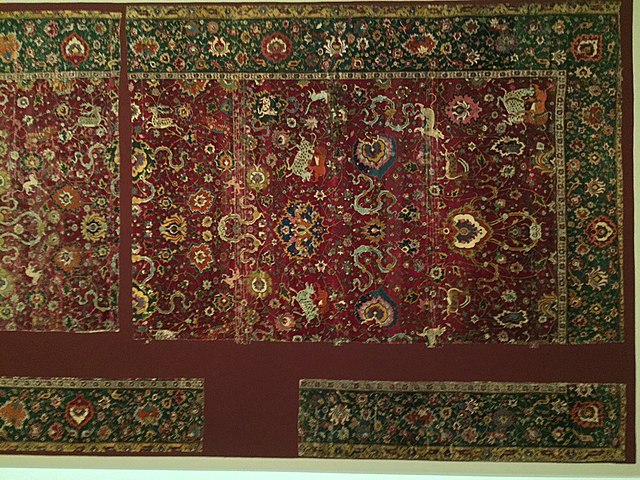A Tabriz rug or carpet is a type in the general category of Persian carpets from the city of Tabriz, the capital city of East Azerbaijan province in northwest of Iran. It is one of the oldest rug weaving centers and makes a huge diversity of types of carpets. The range starts at Bazaar quality of 24 raj and on up to the incredibly fine 110 raj. Raj is the unit of knot density. It shows the rigidity of the rug which based on the number of strings used for the foundation of the rug. Strings materials are usually made of cotton or silk which is used for very fine rugs.
Typical traditional Tabriz style "Afshan carpet", Azerbaijan Carpet Museum
Tabriz style "Hunting carpet", Museo Poldi Pezzoli
Tabriz style "Ardabil Carpet", Victoria and Albert Museum
Tabriz style "Farhad and Shirin carpet", National Museum of History of Azerbaijan
A Persian carpet or Persian rug, also known as Iranian carpet, is a heavy textile made for a wide variety of utilitarian and symbolic purposes and produced in Iran, for home use, local sale, and export. Carpet weaving is an essential part of Persian culture and Iranian art. Within the group of Oriental rugs produced by the countries of the "rug belt", the Persian carpet stands out by the variety and elaborateness of its manifold designs.
Detail of the Mantes Carpet, Safavid, Louvre
Hunting Carpet made by Ghiyâth-ud-Din Jâmi, wool, cotton and silk, 1542–1543, Museo Poldi Pezzoli, Milan
16th century, the "Schwarzenberg Carpet"
Persian Safavid period Animal carpet 16th century, Museum für Kunst und Gewerbe Hamburg







